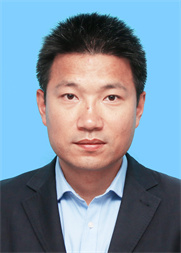- Your location:Home > Education > Supervisor > Pharmacology
Name:Qian Chen 陈迁 Title:Principle Investigator Education:Ph.D. Contact Number:0760-85286866 E-mail:chenqian@zidd.ac.cn Address:SSIP Healthcare and Medicine Demonstration Zone, Zhongshan Tsuihang New District, Guangdong 528400

-
Biography
Education:
1995/09-2000/06 B. Medicine Xiangya School of Medicine, Central South University, Changsha, China
2000/09-2003/06 M.S. Molecular Biology Xiangya School of Medicine, Central South University, Changsha, China
2003/09-2007/07 Ph.D. Neuroscience Institute of Neuroscience, Chinese Academy of Sciences, Shanghai, China
Work Experience
2007/07-2008/05 Research assistant Institute of Neuroscience, Chinese Academy of Sciences, Shanghai, China
2008/05-2010/08 Postdoctoral Fellow Duke University, Durham, NC
2010/08-2014/04 Postdoctoral Fellow McGovern Institute for Brain Research in MIT, Cambridge, MA
2014/04-2022/01 Research Scientist McGovern Institute for Brain Research in MIT, Cambridge, MA
2022/01-current Principal Investigator Zhongshan Institute for Drug Discovery, Shanghai Institute of Materia Medica, Chinese Academy of Sciences, Zhongshan, China
-
Research Directions
1.The neural circuit dysfunction of autistic brain;
2. The comorbidity of epilepsy and autism;
3. Gene therapy of neuropsychiatric disorders.
-
Achievements
My work focuses on uncovering the molecular & circuitry mechanisms of neurological disorders with a special interest in autistic spectrum disorders (ASD). ASD is a developmental disability that can cause significant social, communication and behavioral challenges. The estimated prevalence of US children with ASD diagnosis is 1 in 40. My research has generated a comprehensive characterization of circuit abnormalities associated with obsessive behavior, social deficits, and sensory hypersensitivity in a Shank3 knockout autistic animal model, which serves as a foundation with which my lab will tackle the molecular and circuit mechanisms that underlie the ASD. My plan is to 1) dissect the neural activity changes in ASD mouse model under different stimulation condition to inform translational and clinical ASD studies (bench to bedside); and 2) model human ASD-related gene mutations in human stem cells and organoids to systematically examine the role of these mutations in ASD pathogenesis (bedside to bench) . Ultimately, my goal is to seamlessly integrate benchwork and translational research using gene therapy approaches to develop novel therapies for ASD to treat the ASD.
My research experience has prepared me to succeed in my research goal. My Ph.D. research examined differential roles of NMDA receptors in epilepsy and the role of CDKL5 gene functions in Rett Syndrome (J. Neuroscience, 2007 and 2010). My postdoctoral research has sought to uncover, using in vivo two-photon calcium imaging and genetic techniques in imaging the neural activity in live animals (Neuron, 2012). Combining multiple methods including mouse behavior/opto-&chemo-genetics/in vivo two-photon calcium imaging, I studied the striatal dysfunction underlying repetitive behavior (J Clinical Investigation, 2016), anterior cingulate cortex dysfunction underlying social deficits (Nature Neuroscience, 2019) and sensory hypersensitivity in Shank3-deficient model of autism (Nature Neuroscience, 2020).
-
Publications
1.Chen Q#, Deister CA#, Gao X, Chen NY, Wells MF, Liu RP, Goard M, Dimidschstein J, Fishell G, Moore CI, Feng G. Dysfunction of cortical GABAergic neuron leads to sensory hyper-reactivity in Shank3 model of autism. (2020) Nature Neuroscience , 23, pages 520–532 (2020) (#co-first author)
2.Chen D , Ren KK , Liu HY, Mao HH, Li ZY,Mo HM, Xie SJ, Shi YW, Chen Q*, Wang WT * . A Whole-Brain Cell-Type-Specific Sparse Neuron Labeling Method and Its Application in a Shank3 Autistic Mouse Model. Frontiers in cellular neuroscience 14, 145, doi:10.3389/fncel.2020.00145 (2020).(* co-corresponding author)
3.Guo B#, Chen J#, Chen Q#, Ren K, Feng D, Mao H, Yao H, Yang J, Liu H, Liu Y, Jia F, Qi C, Lynn-Jones T, Hu H, Fu Z, Feng G, Wang W, Wu S.Anterior cingulate cortex dysfunction underlies social deficits in Shank3 mutant mice. (2019) Nature Neuroscience, 22(8):1223-1234. (#co-first author)
4.Wang W#, Li C#, Chen Q # Van De Goes M, Hawrot J, Yao A, Lu C, Zang Y, Zhang Q, Layman K, Wang D, Gerfen CR, Fu Z, Feng G Striatopallidal dysfunction underlies repetitive behavior in Shank3 model of autism. (2017) the Journal of Clinical Investigation (# co-first author)
5.Dimidschstein J, Chen Q, Tremblay R, Rogers SL, Saldi GA, Guo L, Xu C, Liu R, Lu C, Chu J, Avery MC, Rashid SM, Baek M, Jacob AL, Smith GB, Wilson DE, Kosche G, Kruglikov I, Rusielewicz T, Kotak VC, Mowery TM, Anderson SA, Callaway EM, Dasen JS, Fitzpatrick D, Fossati V, Long MA, Noggle S, Reynolds JH, Sanes DH, Rudy B, Feng G, Fishell G. A viral strategy for targeting and manipulating interneurons across vertebrate species. (2016) Nature Neuroscience. 19(12):1743-1749.
6.Chen Q, Cichon J, Wang WT, Qiu L, Lee SR, Campbell NR, DeStefino N, Goard M, Fu ZY, Yasuda R, Looger LL, Arenkiel BR, Gan WB, Feng G. (2012) Imaging Neural Activity Using Thy1-GCaMP Transgenic mice. Neuron. 76:297-308.
7.Chen Q#, Zhu YC#, Yu J, Miao S, Zheng J, Xu L, Zhou Y, Li D, Zhang C, Tao J, Xiong ZQ. (2010) CDKL5, a protein associated with rett syndrome, regulates neuronal morphogenesis via Rac1 signaling. J Neurosci. 30:12777-86. (# co-first author)
8.Chen Q#, He S#, Hu X-L, Yu J, Zheng J, Zhou Y, Zhu J, Yu Y, He S, Zhang S, Zhang C, Duan W-H, and Xiong Z-Q. (2007) Differential roles of NR2A and NR2B-containing NMDA receptors in activity-dependent BDNF gene regulation and limbic epileptogenesis. J. Neurosci. 27: 542 – 552. (# co-first author)
